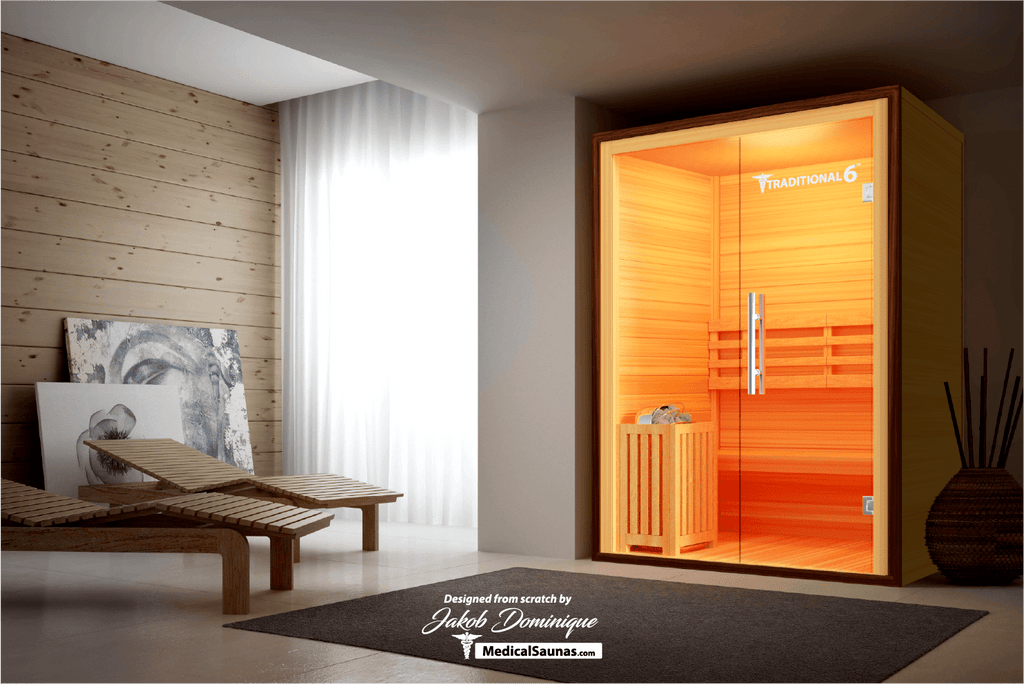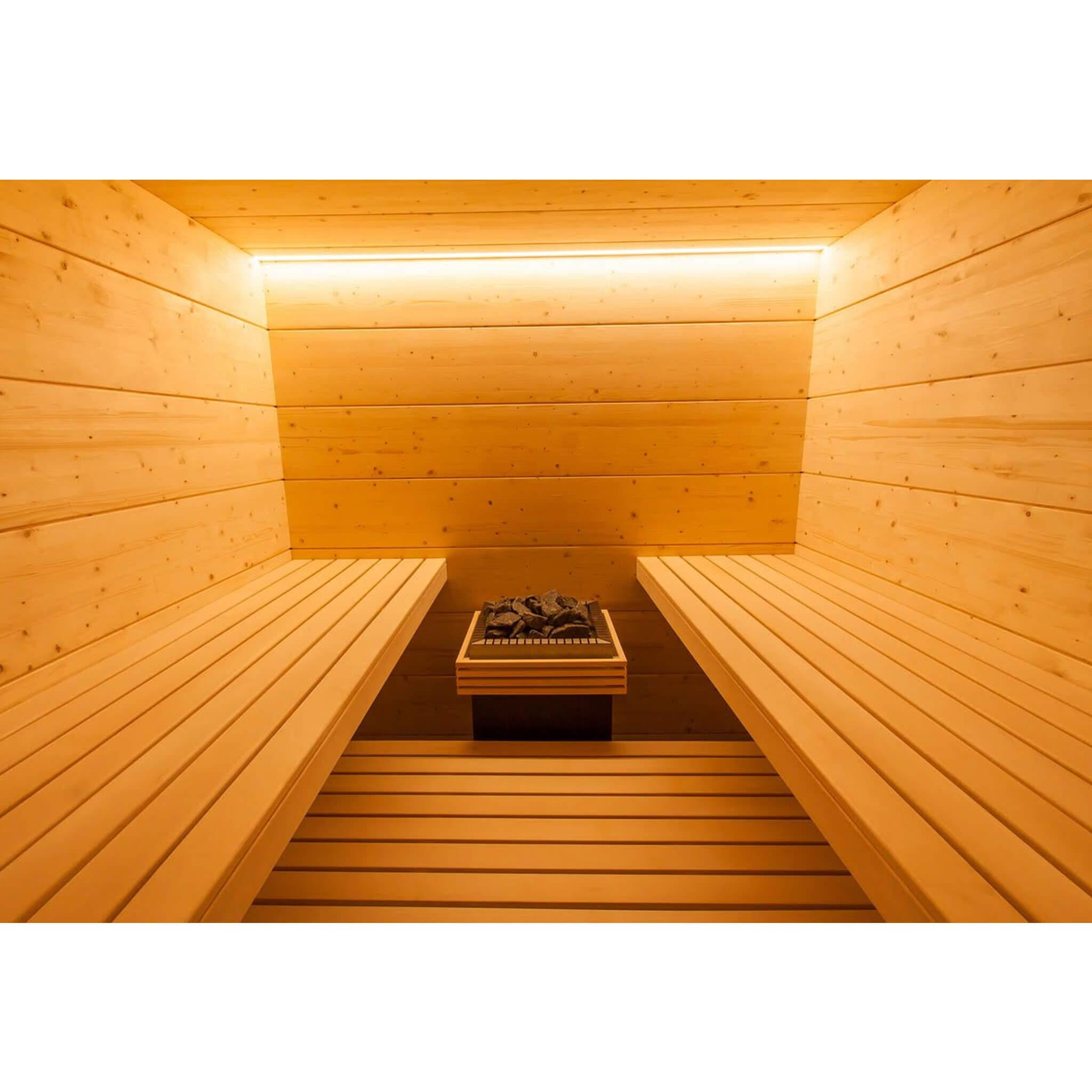Traditional Sauna Things To Know Before You Buy
Traditional Sauna Things To Know Before You Buy
Blog Article
All about Traditional Sauna
Table of ContentsThe Basic Principles Of Traditional Sauna The Best Strategy To Use For Traditional Sauna10 Easy Facts About Traditional Sauna ShownLittle Known Questions About Traditional Sauna.
The majority of the weight lost in a sauna is water loss and is re-gained upon rehydrating. However, without a question sauna can be a fundamental part of a healthy and balanced fat burning program. To consider the differences between typical and IR saunas, I will certainly separate these into proven, theoretical, and made differences.Hence, the hottest factor in the saunawhich is at the ceiling directly over the sauna heateris normally between 185 and 190 F. Traditional Sauna. Claims that a standard sauna goes beyond 200 F is simply not true and not appropriate for electric saunas marketed in the United States. The temperature level for a far-infrared sauna is typically established between 120 and 140 F; however, unlike the standard sauna, the objective in and IR area is not to accomplish a heat
As a result of this, the temperature level difference is virtually pointless, because excessive sweating causes both sauna kinds, but the technique of heating the body is various. In an IR sauna the bather will feel warm and will certainly sweat profusely, yet at a lot reduced temperatures. Thus, if the objective is to invest longer amount of times in the sauna, the IR sauna is a good choice.

Top Guidelines Of Traditional Sauna
When the high temperature is attained, the elements cycle on and off to maintain the heat. A lot of traditional sauna users appreciate pouring water over the rocks to develop vapor to raise sauna humidity levels. The benefits of pouring water over the rocks consist of: making the area much more comfy, dampening the nasal flows, and enabling the use of aromatherapy by blending vital oils with the water.
In a far-infrared sauna, the heat waves permeate the body to effectively heat the body and increase the body core temperature. To accomplish this raised temperature level, Far-infrared emitters create infrared power which is close to the exact same wavelength as that which the body normally emitsoften described as the "Vital Array" of 7 to 14 microns), so the power is well gotten by the body.
When the power enters the body, it causes the body temperature to enhance and inevitably results in sweat. In an infrared sauna it is necessary for the emitters/heaters to continue to be on virtually continuously. Considering that there is no mass of rocks to keep warm, the sauna will cool if the emitters shut down.
As pointed out above, the sauna bather in an infrared room wants to position himself before running emitters to get optimal take advantage of the warmth. The my website heating time for both spaces can be really different, depending on how the rooms are used. For a standard sauna, a bather needs to enable 30-40 mins for the room to achieve a desired temperature and to correctly pre-heat the rocks.
Little Known Questions About Traditional Sauna.
A well constructed sauna will normally attain a temperature level of 150-160 F in regarding 30-40 minutes. For hotter temperatures, the space may read here need to warmth for a longer period.
To some, 15 minutes was "lost" while the infrared energy heated the wood panels instead than warming a body, while others find a pre-heated room to be more comfortable and think an elevated starting temperature level is needed to begin perspiring. The length of suggested use for each area is roughly the exact same (10-15 minutes per session); nevertheless, because of the lower air temperature levels and the capacity to really feel the results of infrared heat faster than a standard sauna, it is not uncommon for a person to invest a total amount of 20-30 minutes in an infrared sauna.
Conventional saunas have a tendency to be larger (thus utilize even more electrical power) than infrared saunas, although conventional saunas are certainly offered in one and 2 individual sizes also. For a two-person conventional sauna, 5x6 or 5x7 size is most prominent. The leading bench can easily seat two or 3 individuals and is also long sufficient to relax throughout the sauna session.


The typical cost per kWH of power in the united state is roughly $0.11, so a 4.5 kW heater will certainly cost around $.50 to compete one hour, if the heater runs constantly for one hour. Typically a sauna heater will run for 75% of the very first hour and 50% of succeeding hours on since the components cycle once the established temperature is achieved.
Traditional Sauna Things To Know Before You Buy
A two individual far-infrared room is normally physically smaller sized than a typical sauna, usually about 4' x 4' click for info or smaller sized. The IR heating unit is typically 1.5-1.7 kW utilizing a 120 volt 15 amp plug-in solution. Because the space can be made use of earlier than a sauna space, we will presume the room is utilized for to of an hour including warm up time.
There is a rarely talked about distinction in the social experience between the two areas. While our culture has actually shed a few of the social benefit of the traditional sauna experience, it can be extremely socially fulfilling. From household time in the sauna, to heart-felt discussions with considerable others, to sauna partiesthe conventional sauna experience can lead to intimate mingling.
A lot of higher end infrared spaces consist of colored light therapy, audio systems and full-glass fronts.
Report this page